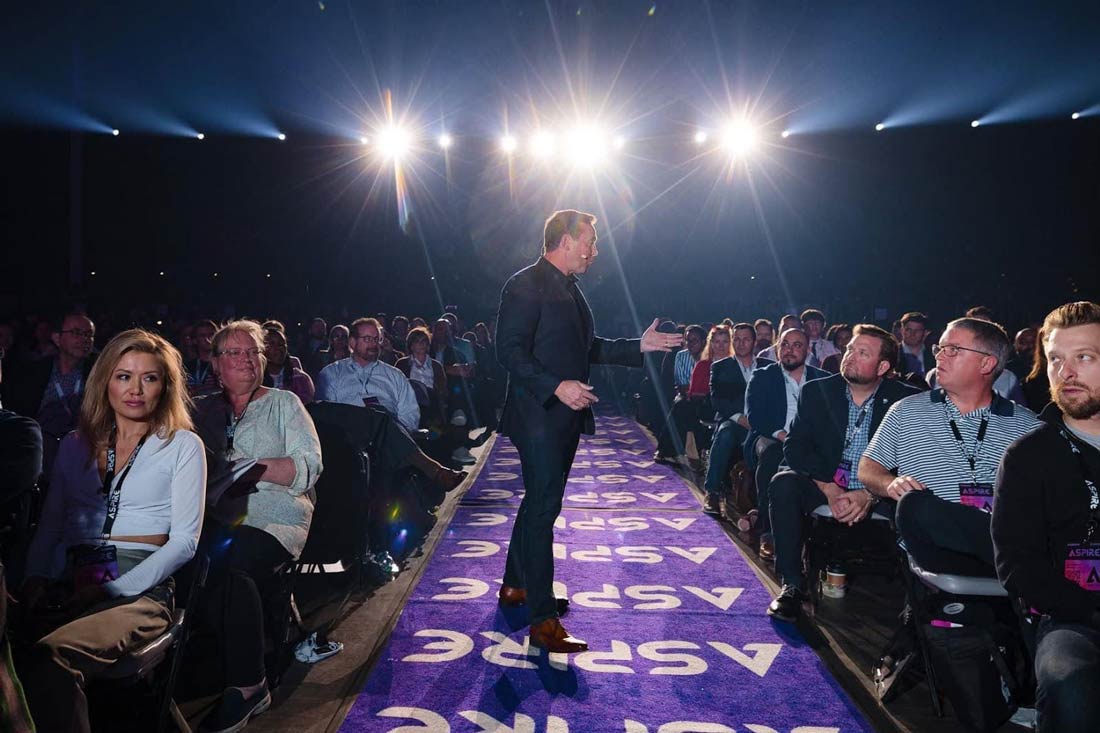Today’s innovative, forward-thinking leaders who have an eye on sustainable success take measures to optimize their energy. This calls for a greater focus on recovery than is conventionally expected, even in the midst of demands from a busy professional life. Jon Gordon—speaker and author of over 25 books, including The One Truth—believes that when leaders see recovery as an integral part of their success, they can elevate their performance to new heights and extend the longevity of their careers.
“My professional life is full with 100+ talks per year and at least as many days on the road, but so is my personal life,” Gordon shares. “I love spending time with my family. Recently, I was really depleted for about a month. I knew I had run myself too hard.” Based on this experience, Gordon feels that it’s impossible for leaders to give positive energy to their teams when they’re teetering on the edge of burnout and their bodies are worn down.
“Too often, our culture is so focused on getting more done in less time when what we often really need is greater energy and the best path to that might mean doing less, but doing it with greater energy and impact,” he says. For leaders aiming for long-term success, Gordon recommends taking note of four recovery trends.
1. Cold and heat therapy
Europeans and people from other cultures have long been fans of saunas, and professional athletes are known to be frequent users of ice baths, cold plunges and, more recently, cryotherapy to accelerate recovery and reduce pain. According to Robby Besner, co-founder and chief science officer at Therasage, this hot and cold contrast therapy is gaining traction among leaders due to its various potential benefits, such as improving circulation; reducing inflammation, muscle soreness and pain; and boosting recovery, mental clarity and overall well-being.
“We have countless professional athletes and biohackers, including high-profile figures who are integrating our infrared saunas and cold immersion modalities into their daily routines because they feel the immediate results,” Besner claims.
2. Movement and mobility
If you have watched the popular Netflix series Live to 100, one of the consistent themes for the blue zone populations is the incorporation of exercise and movement into their daily routines. In Okinawa, Japan, one of these blue zones, you can find elderly people who are still actively walking, gardening and exercising every day. This habit is something leaders can adopt, even when their schedules are hectic.
“Movement is one of the best ways to continue to inject zest and vitality into your day,” physical therapist Jennifer Fraboni, also known as Doc Jen Fit on social media, says. “Our bodies were built to move, so staying stagnant during long stretches of our day, even if we are working, is one of the worst things we can do.”
To stay moving, she recommends keeping a “30 Every 30” rule in mind. For every 30 minutes during the day—whether you are working at a desk, cooking or cleaning the house—try moving your body in the opposite direction for 30 seconds. Open the chest and hips. Round, extend and rotate your back. Then, return to what you were doing. Fraboni claims these “movement snacks,” as she describes them, help to combat stagnancy in your muscles and joints, contributing toward your long-term wellness and performance.
3. Cellular energy and longevity
For leaders looking for a recovery boost, Gordon and Fraboni both recommend paying attention to nicotinamide adenine dinucleotide (NAD), a key coenzyme for metabolism that is found in all living cells. Dr. Jin-Xiong She—founder of Jinfiniti, which offers an NAD test and supplements—claims that though research indicates NAD is central to over 500 cellular processes, he has seen deficiencies of the coenzyme among people over 30.
She, who has a doctorate in population and molecular biology, adds that being NAD-deficient may indicate your cells are aging faster than they need to and could result in slower metabolism, increased fatigue and symptoms such as brain fog and inflammation. Optimizing your NAD levels, on the other hand, could lead to a surge of natural energy, better sleep, pain reduction, faster metabolism and increased mental clarity and stamina—factors that play into a longer and improved lifestyle, according to the founder.
4. Eating energy-rich foods
When your physical energy is weak, your ceiling of performance is noticeably and dramatically lower—and nutrition is at the heart of sustaining your physical energy. This is why professional athletes tend to prioritize nutrition to extend their playing careers. Leaders focused on long-term success can follow suit and nourish themselves with whole foods that are right for their unique gut microbiome, dietitian Julia Glanz recommends.
“Without the right nutrition for your needs and energy demands, you may be able to ‘push through’ for a period of time, but eventually, your body’s functions will start to slow down,” Glanz says. Since people need adequate amounts of essential nutrients to function optimally—both mentally and physically—she claims choosing anti-inflammatory foods rich in micronutrients will help your body have the building blocks it needs on a cellular level, support efficient energy production and reduce cellular damage from oxidative stress and inflammation.
**Opinions and claims made by a guest are strictly those of the guest and do not represent the opinions or claims of SUCCESS Enterprises. No guest statements are a substitute for professional medical advice, diagnosis or treatment. Always seek the advice of your physician or other qualified health care provider with any questions you may have regarding a medical condition or treatment and before undertaking a new health care regimen.




